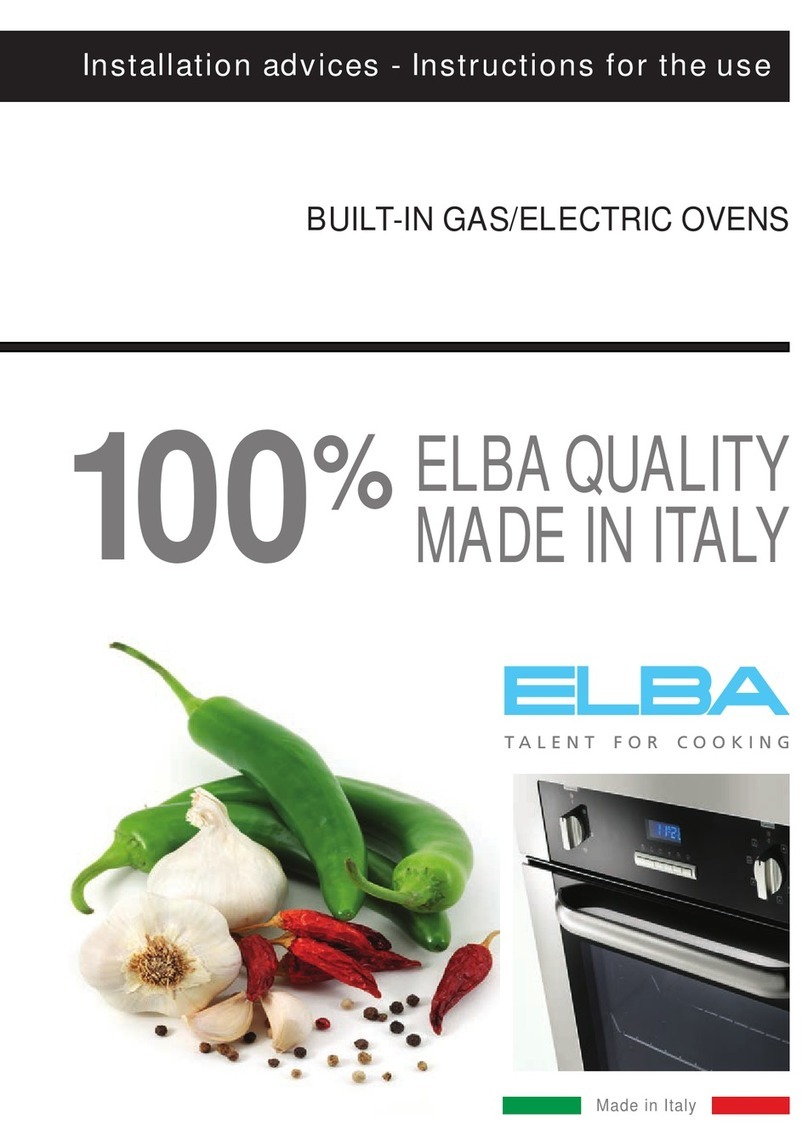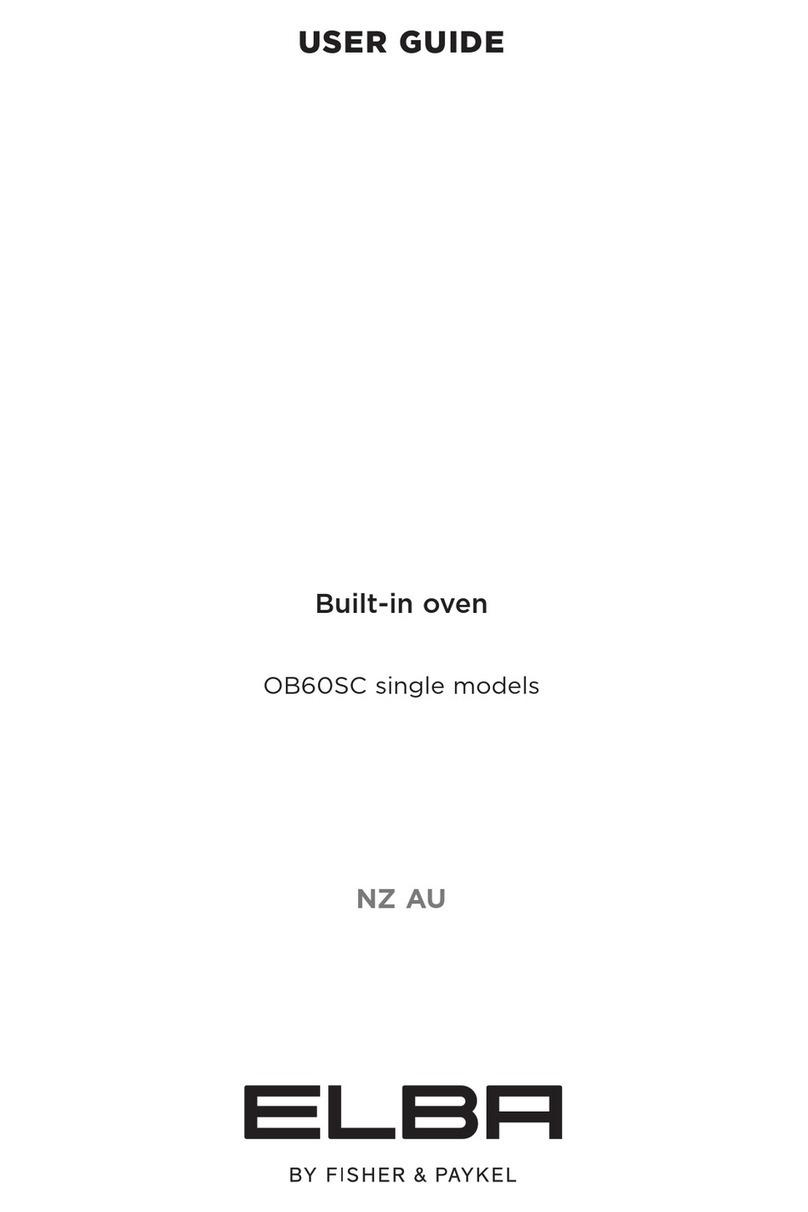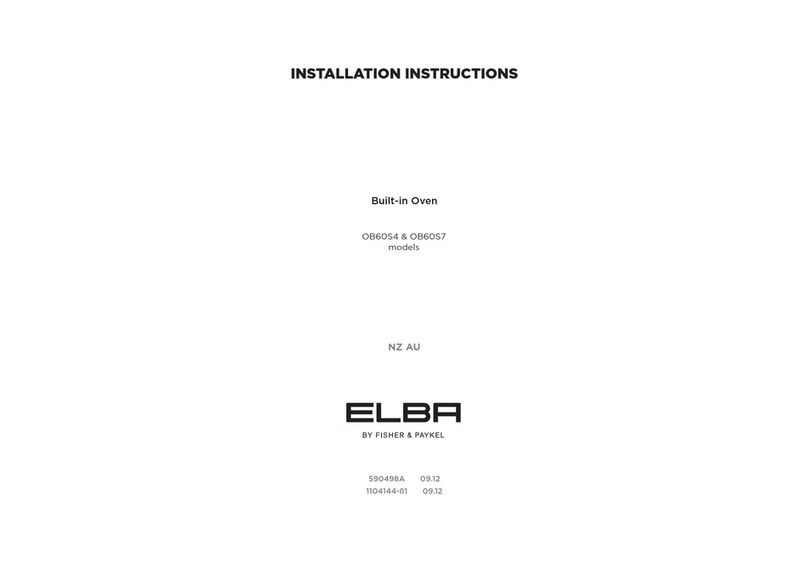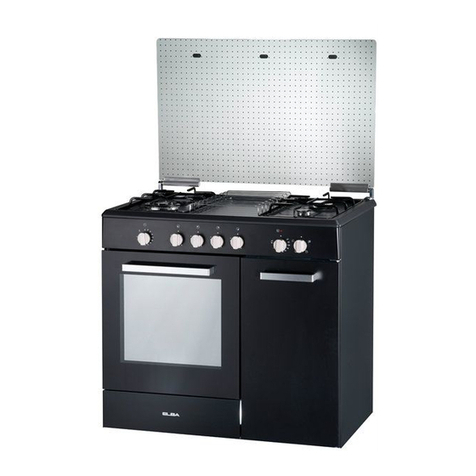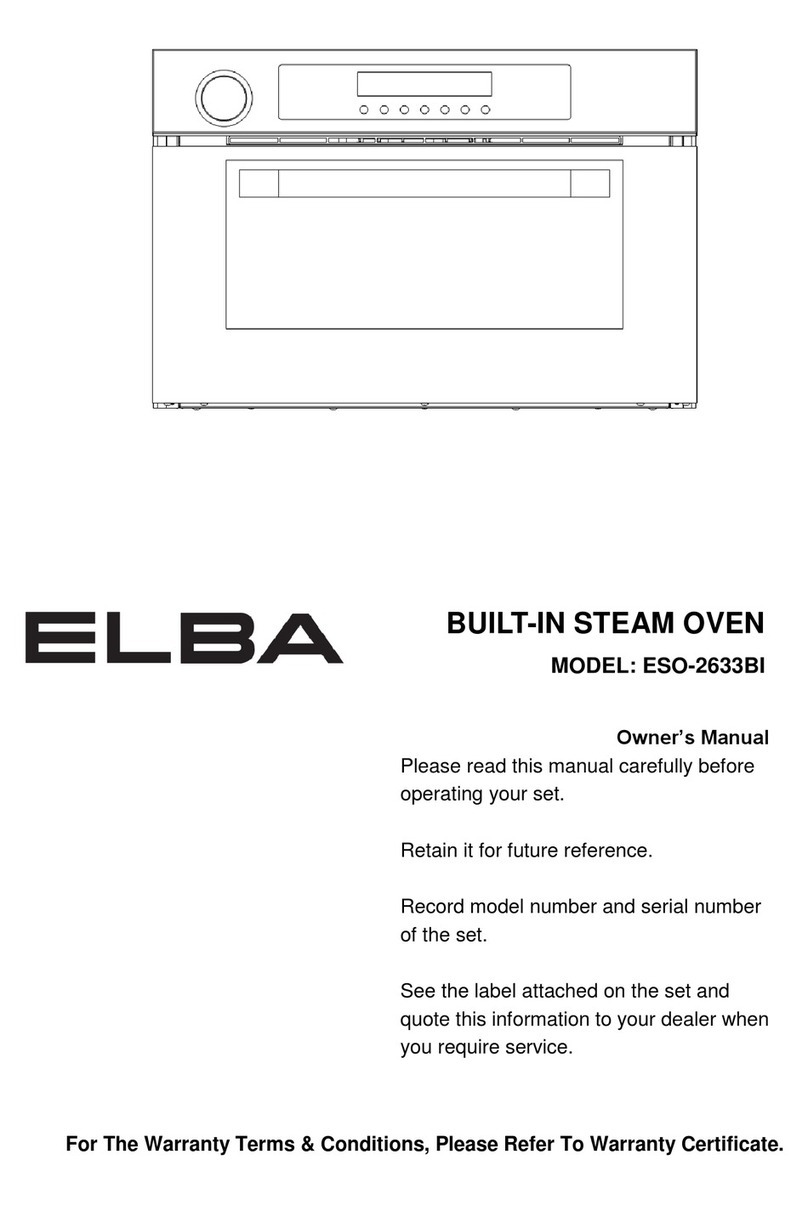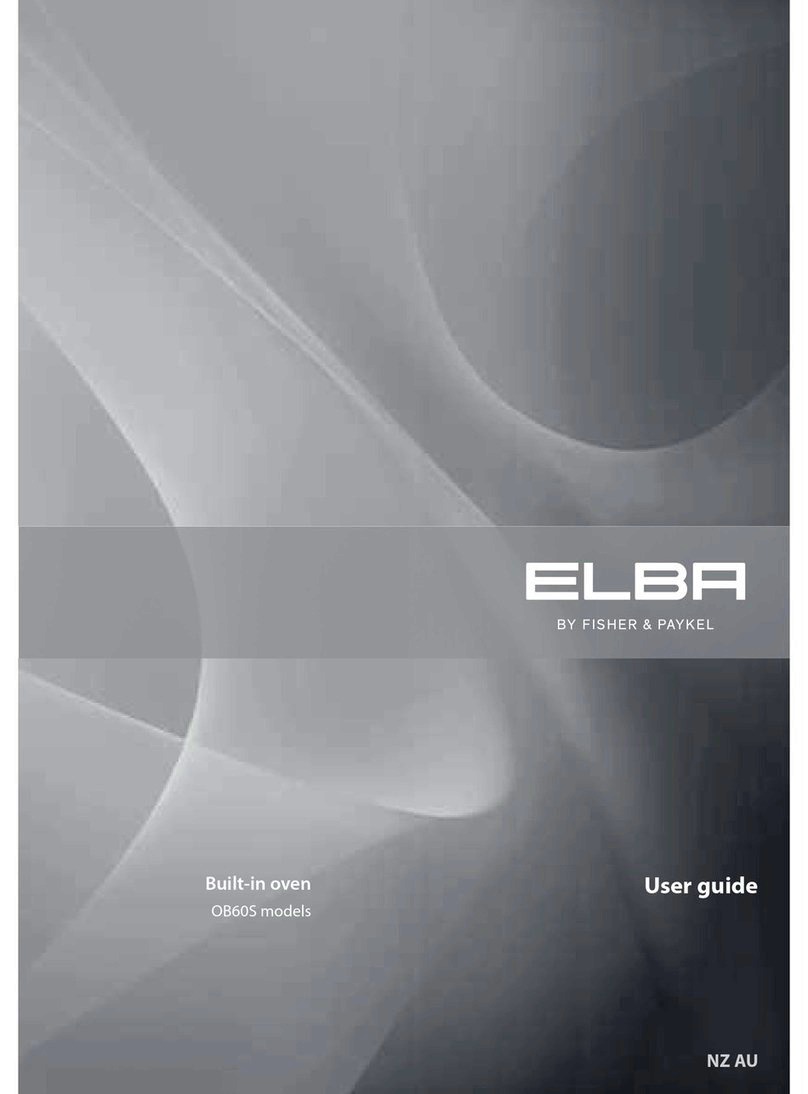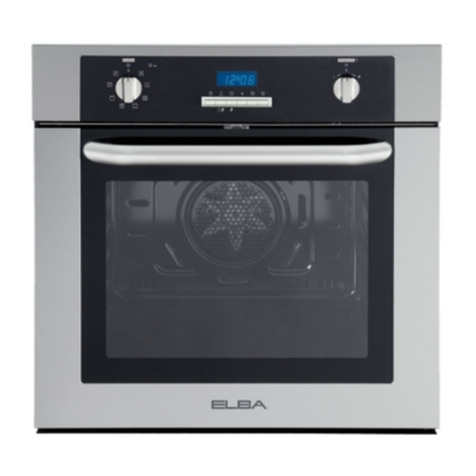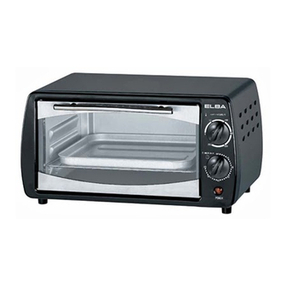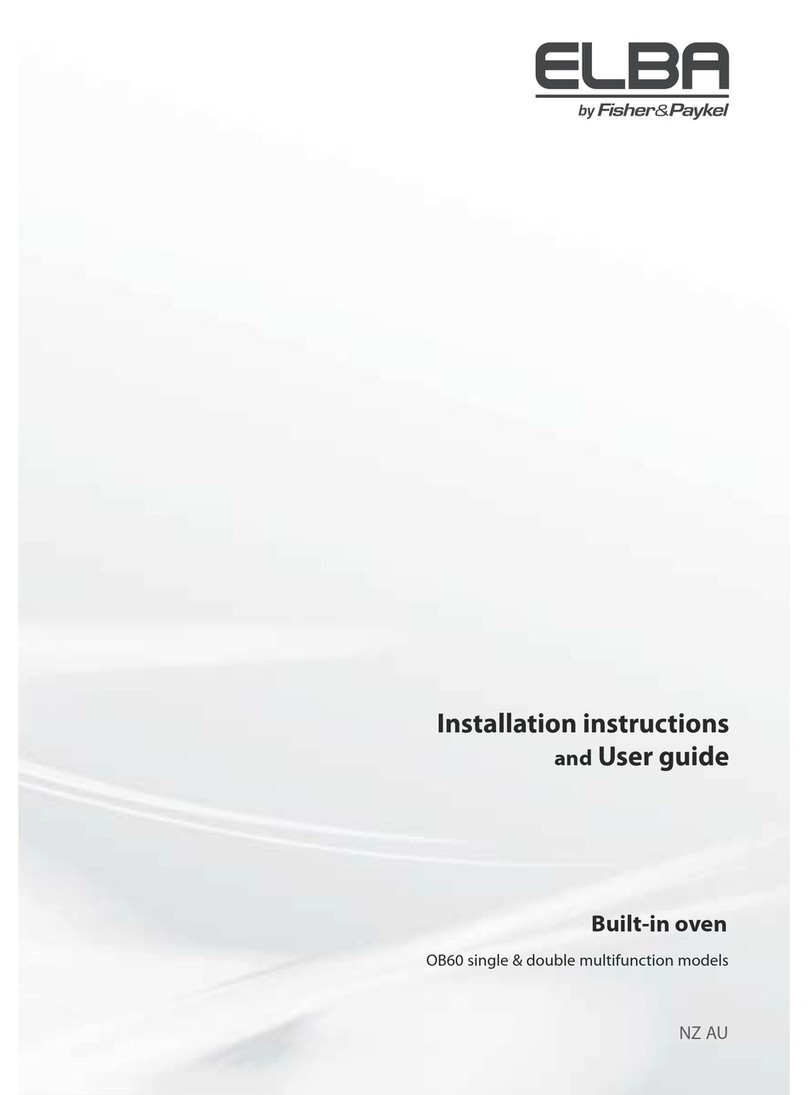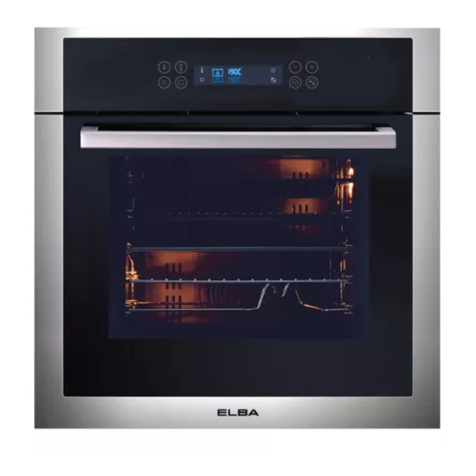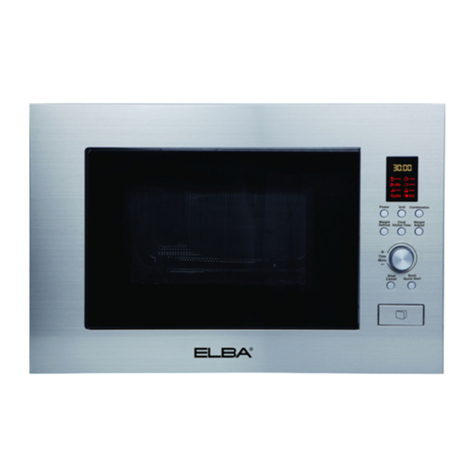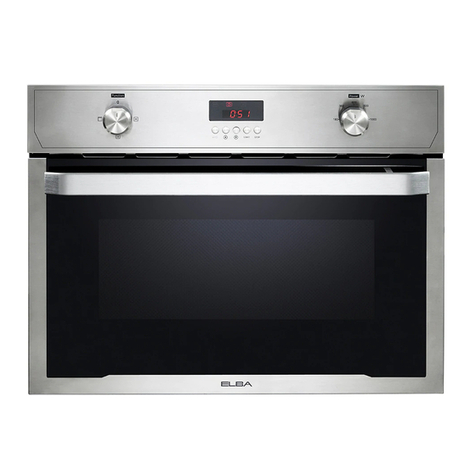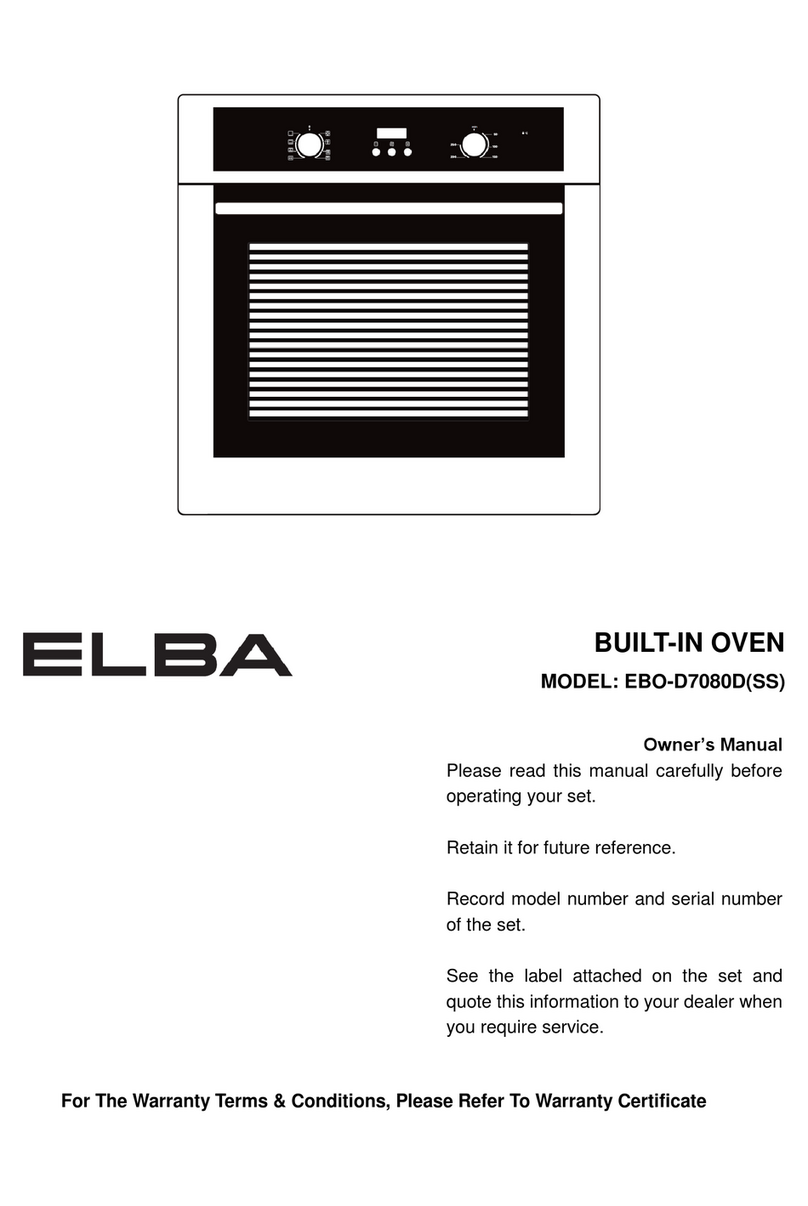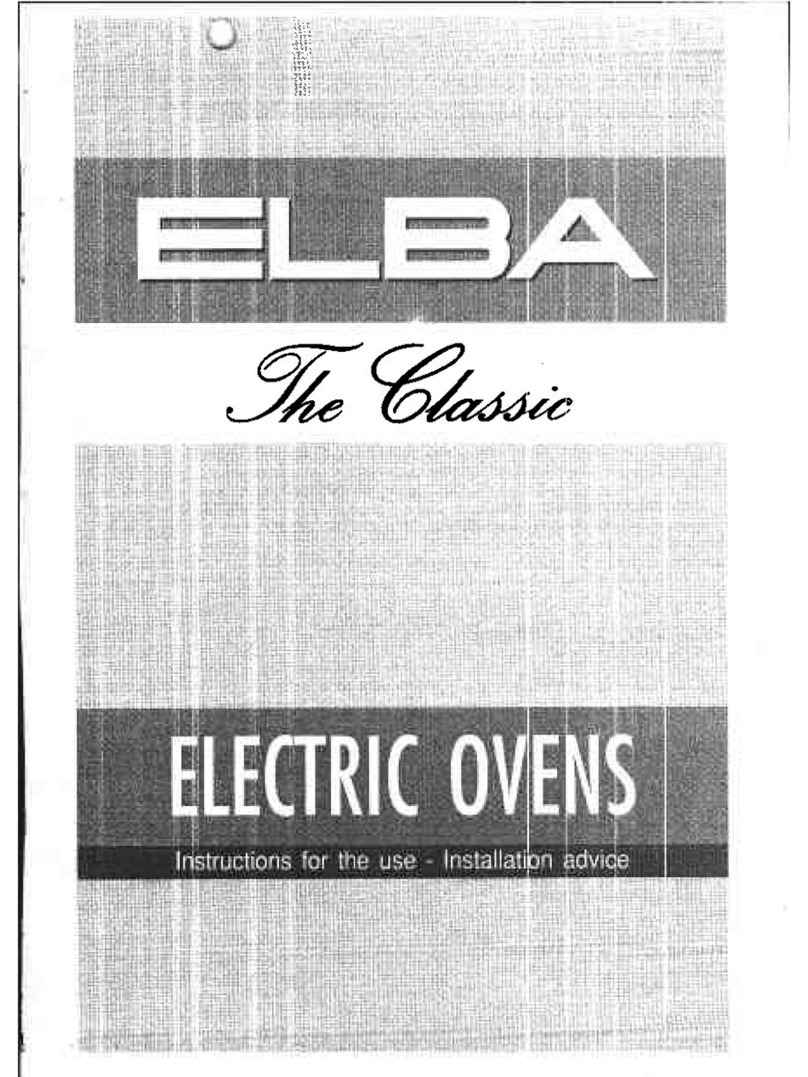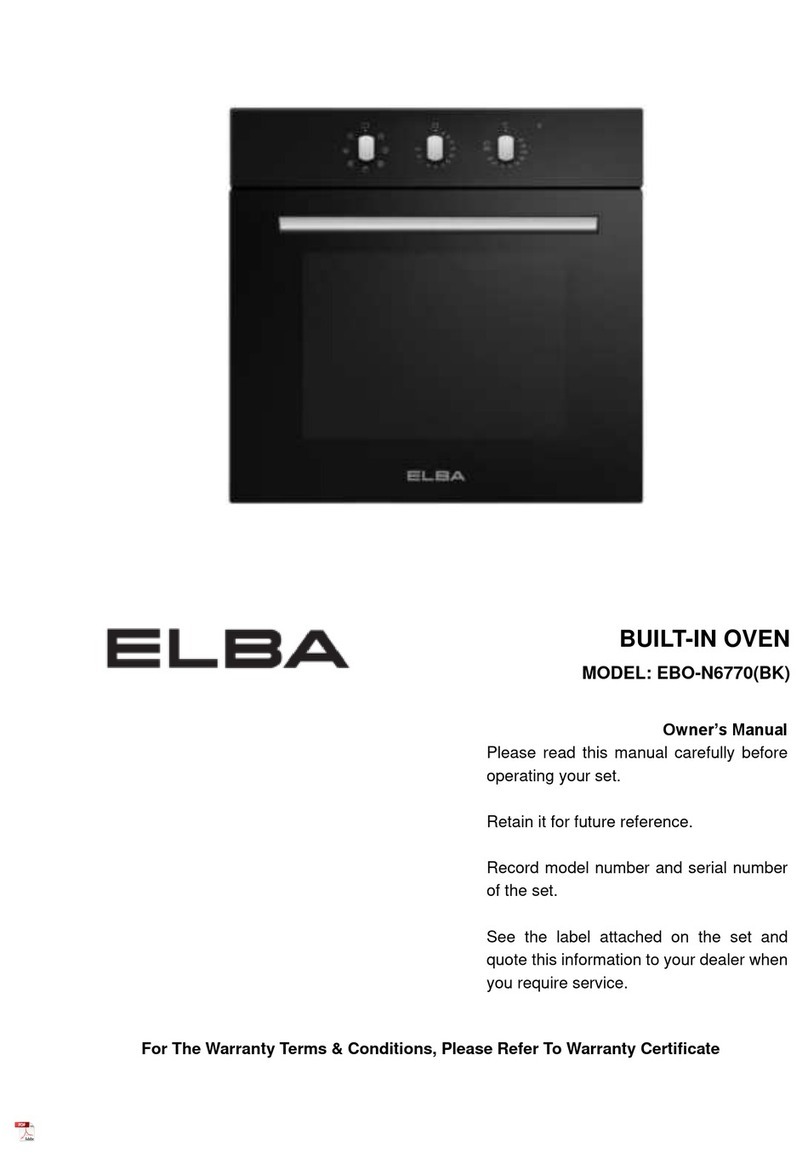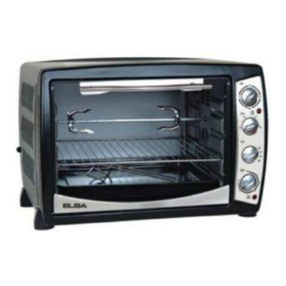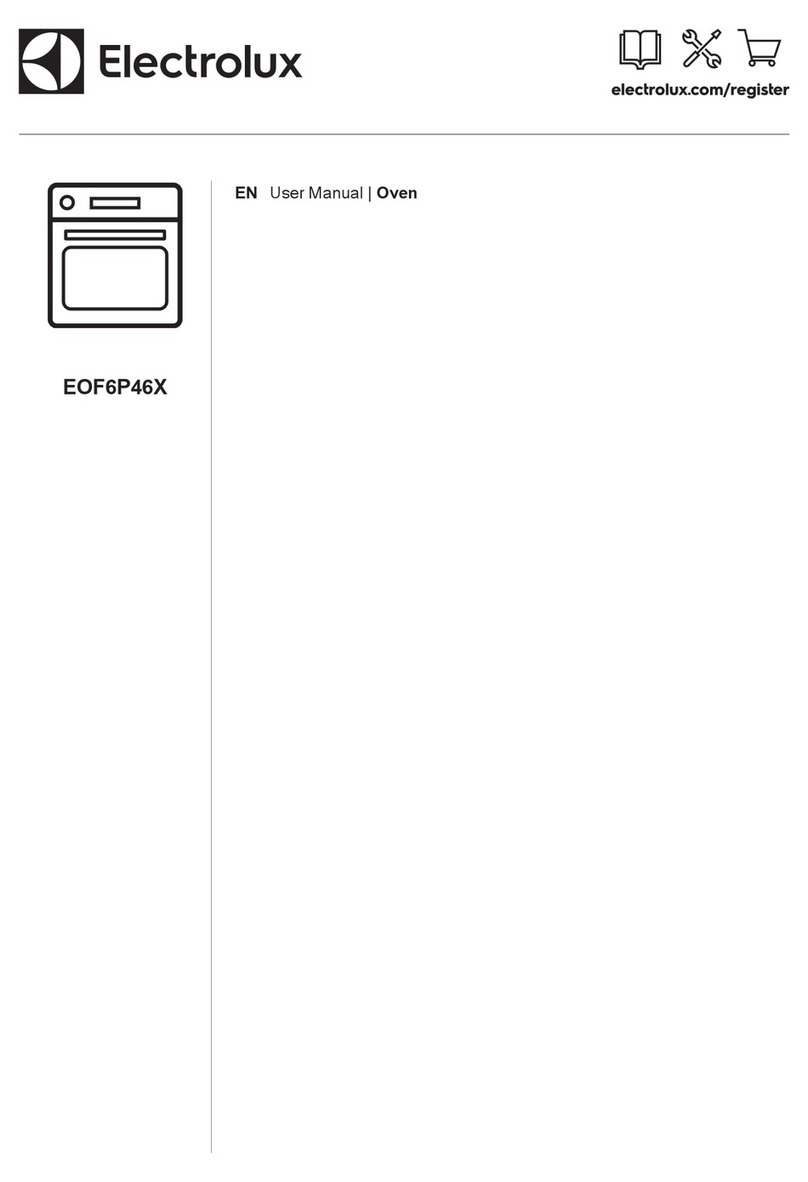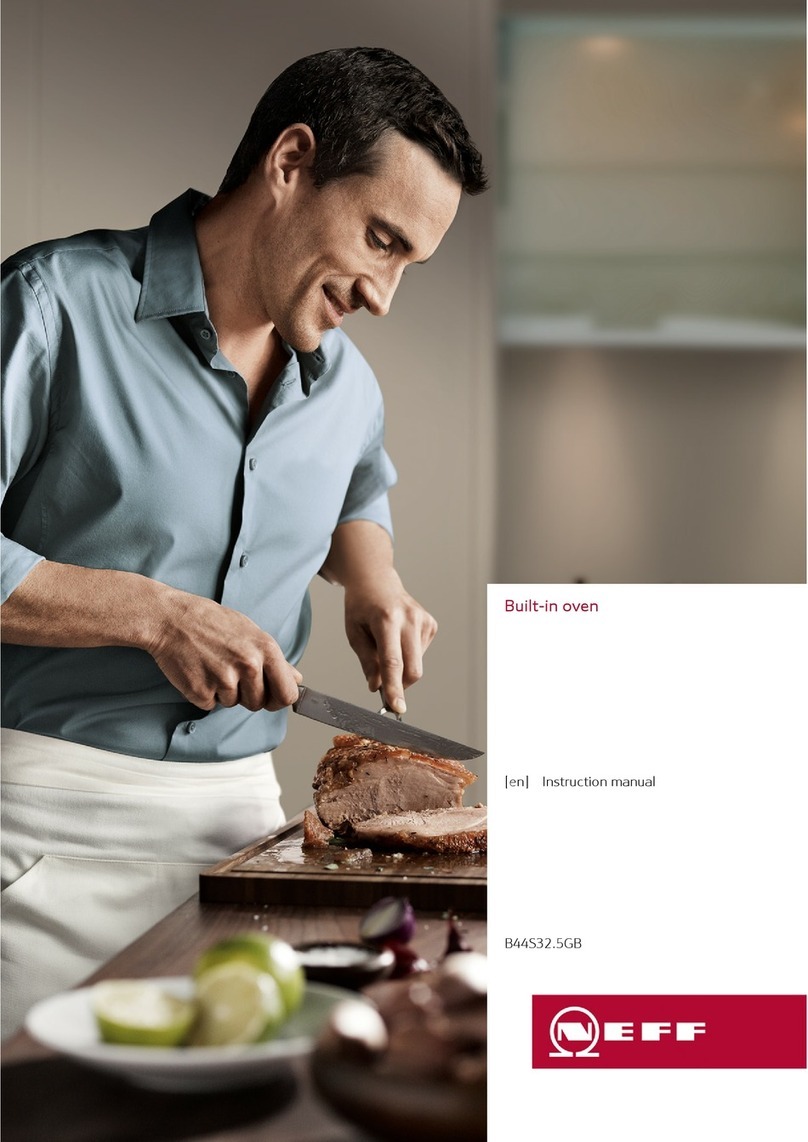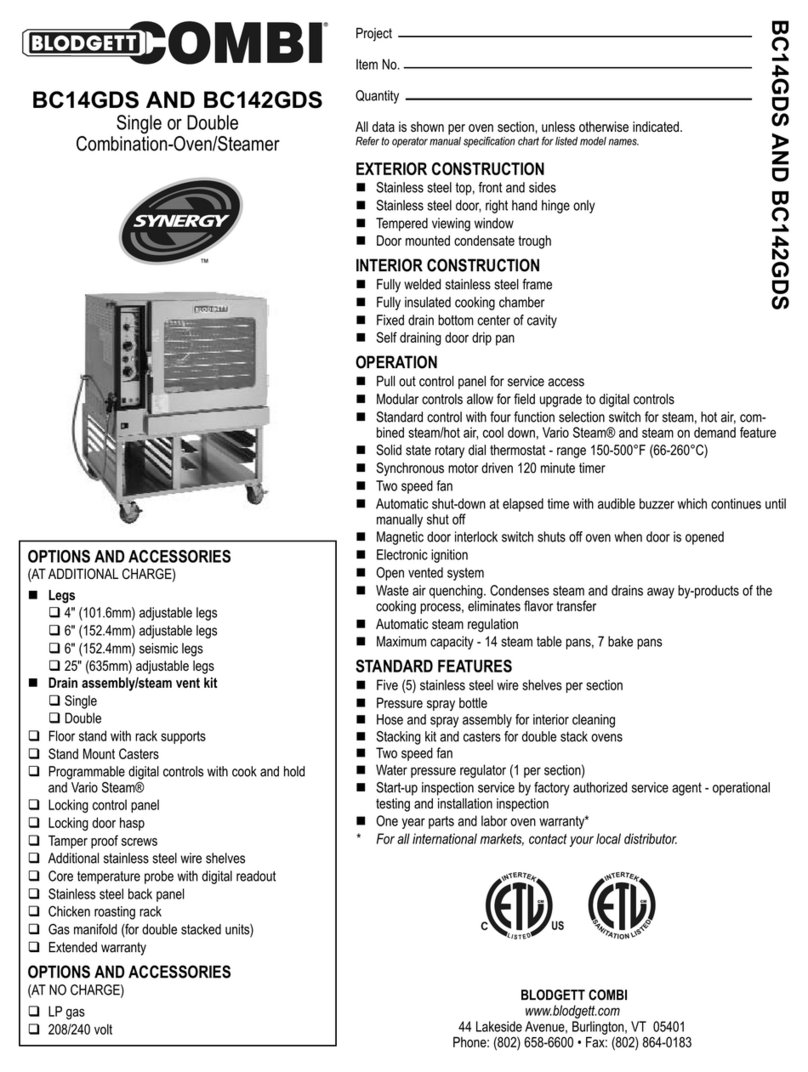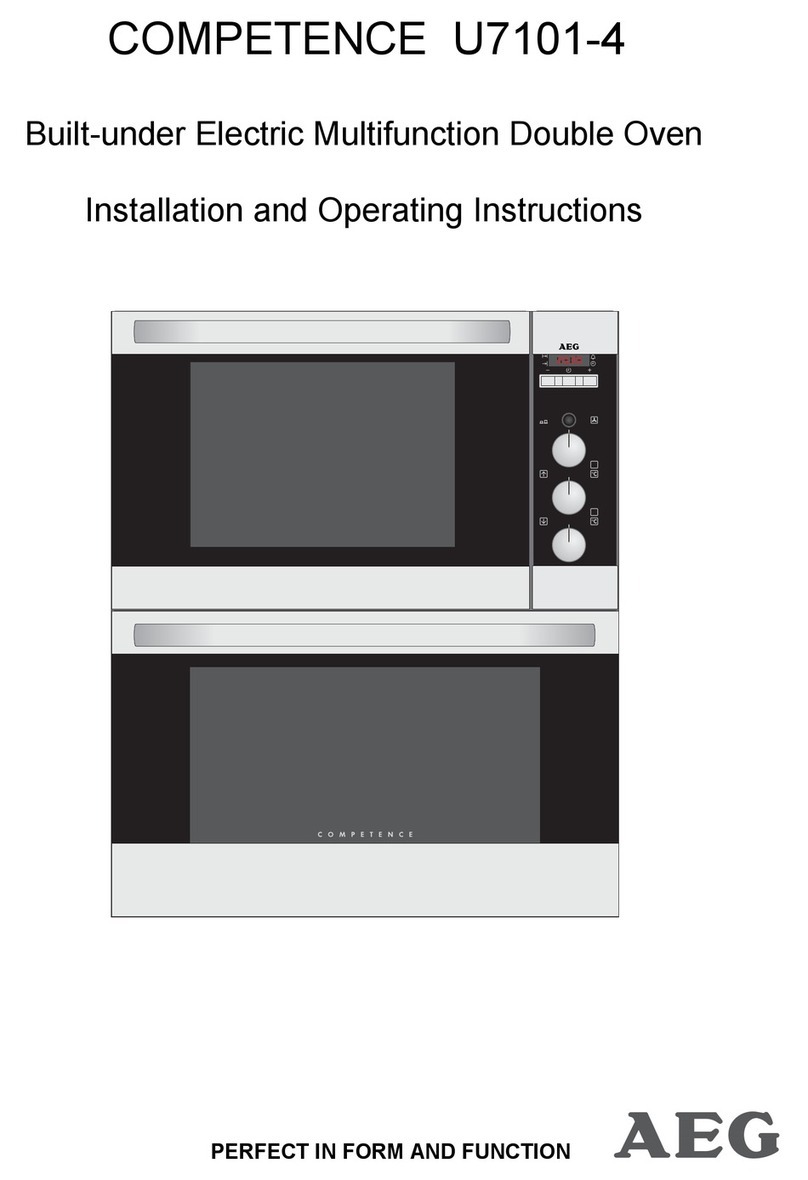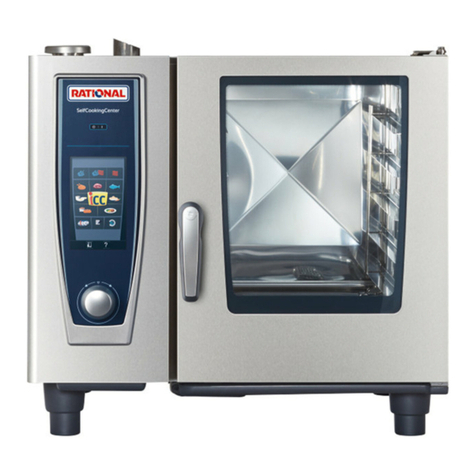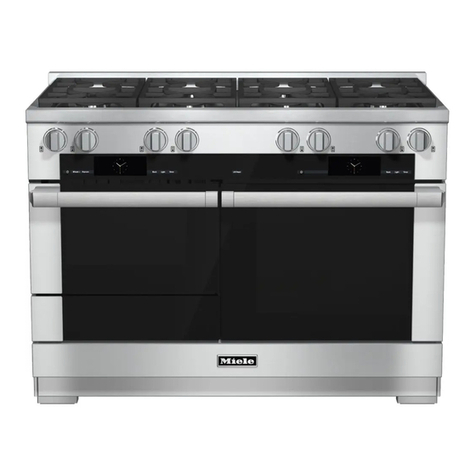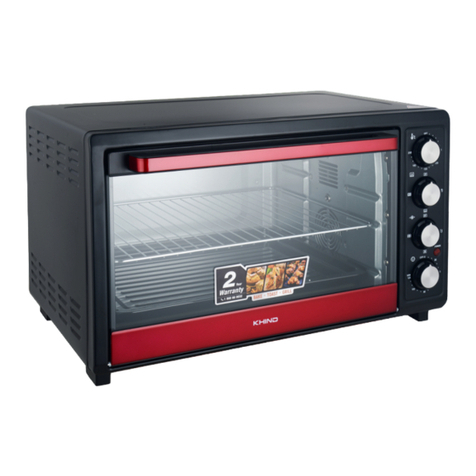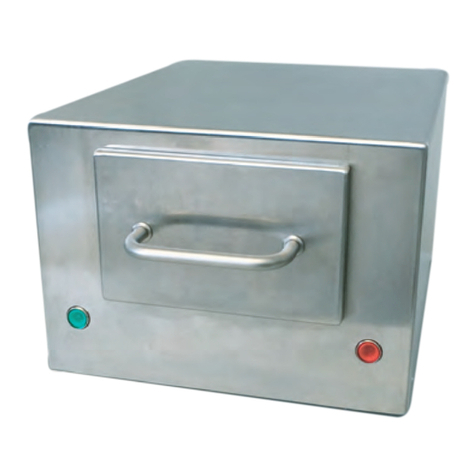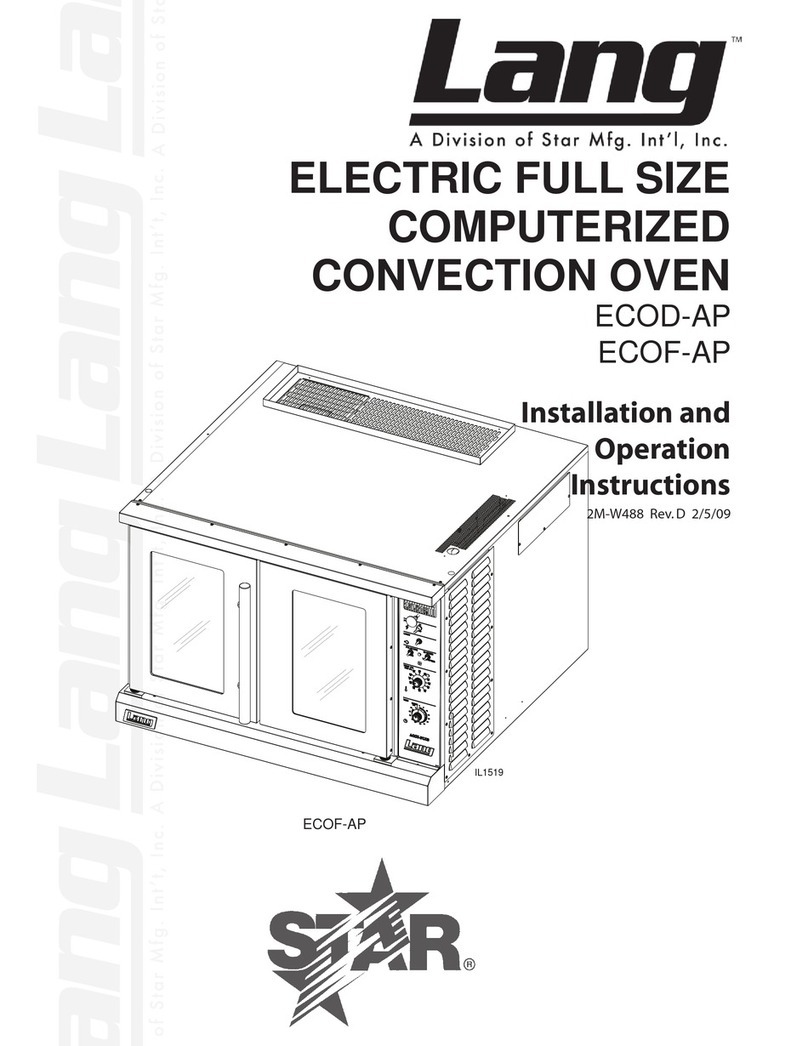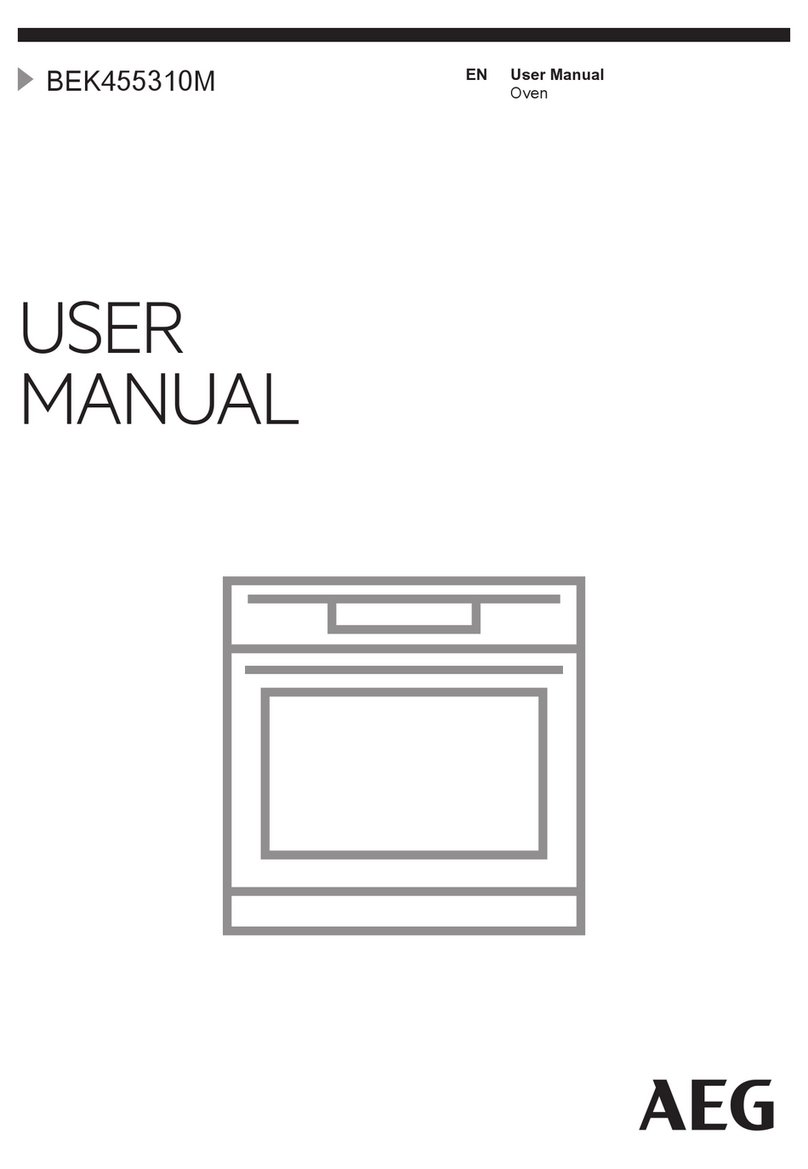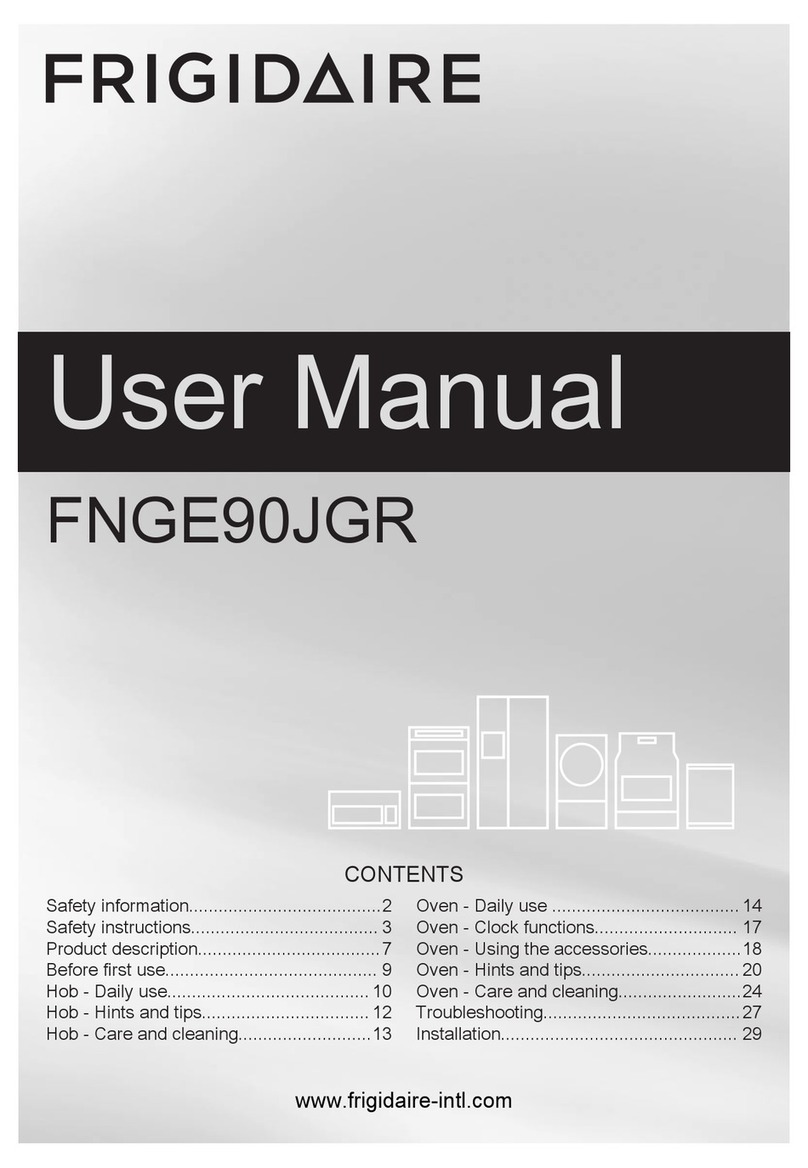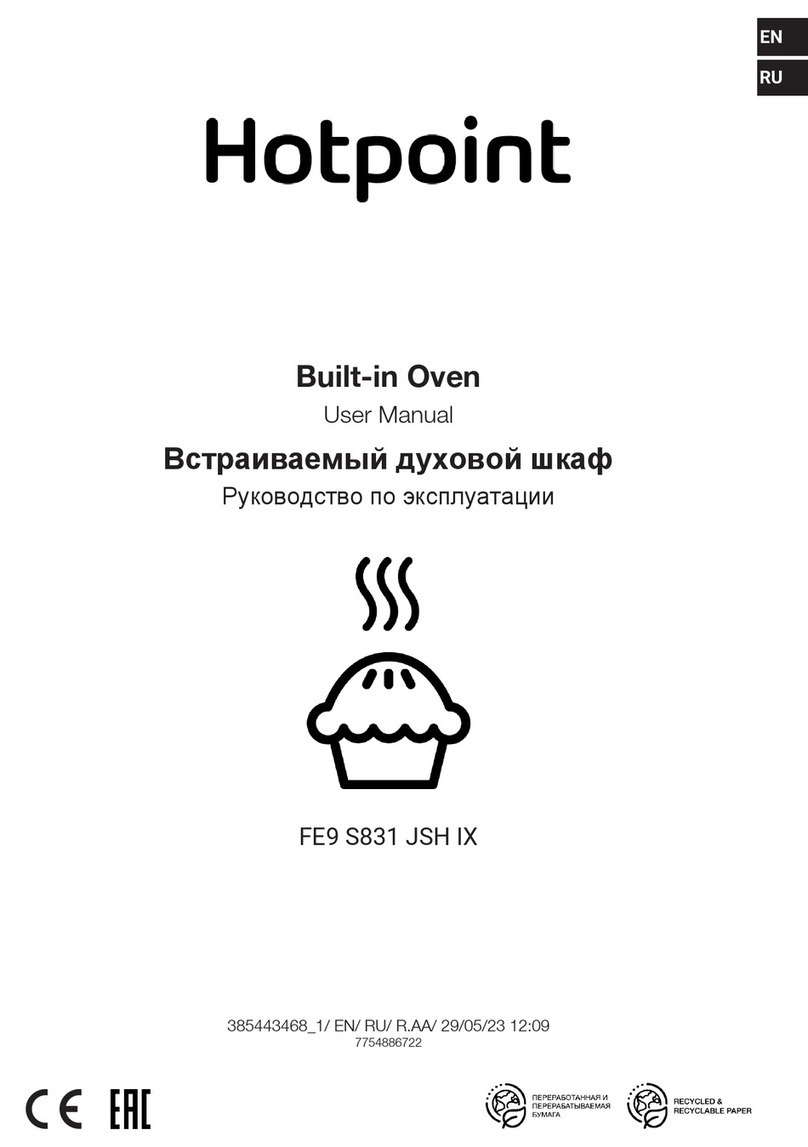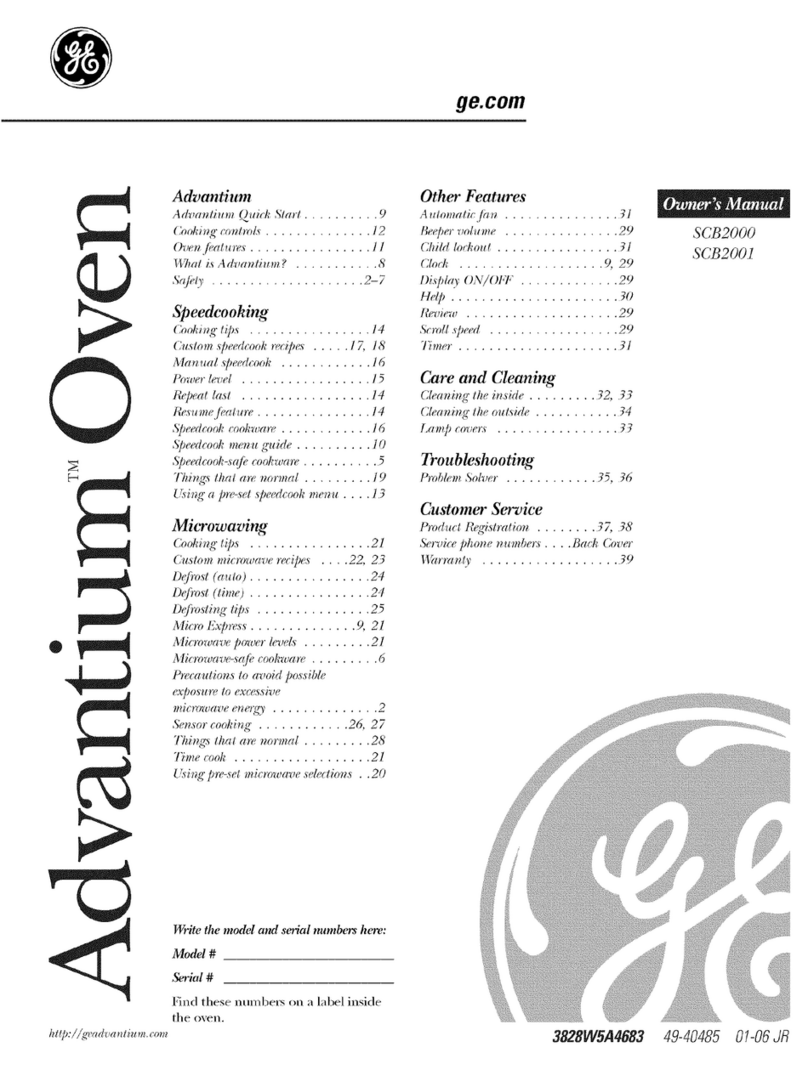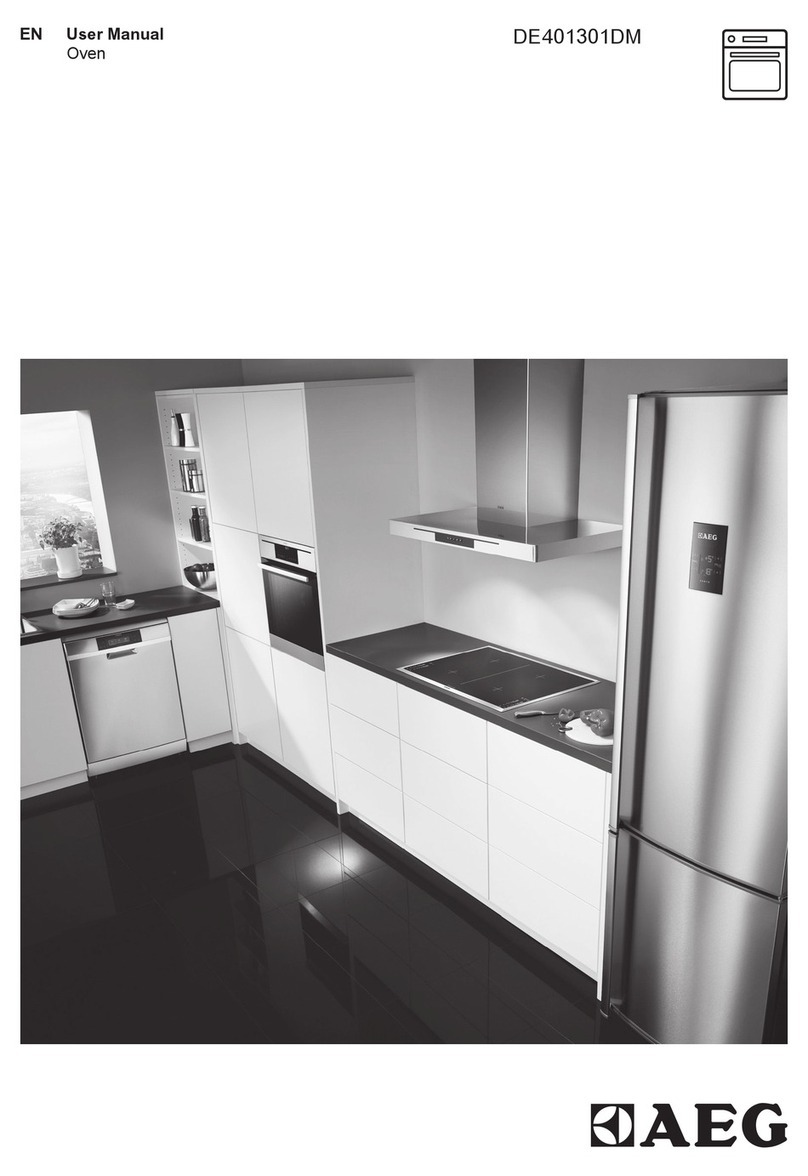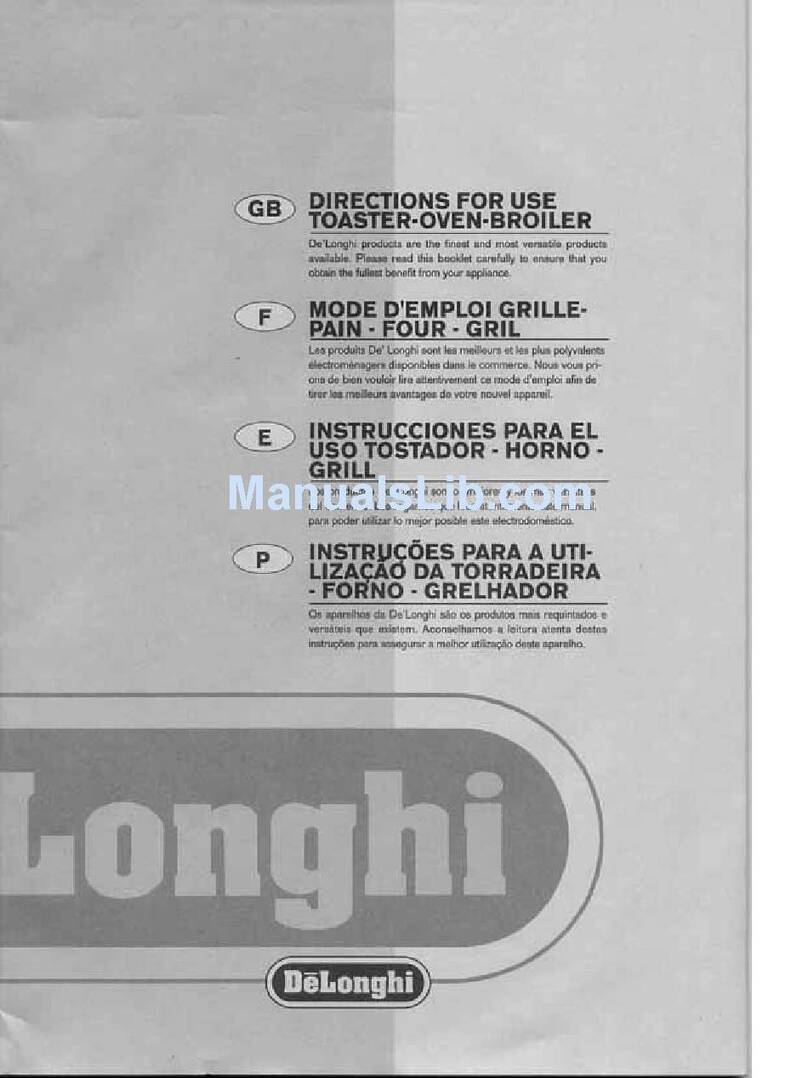10
FUNCTION SELECTOR KNOB (Fig. 4.1)
Rotate the knob clockwise to set the
oven for one of the following functions.
TRADITIONAL CONVECTION
COOKING
The upper and lower heating elements are
switched on. The heat is diffused by natur-
al convection and the temperature must be
regulated between 50° C and 250°C posi-
tion with the thermostat knob.
It is necessary to preheat the oven before
introducing the foods to be cooked.
Recommended for:
For foods which require the same
cooking temperature both internally and
externally, i. e. roasts, spare ribs,
meringue, etc.
LOWER HEATING ELEMENT
In this position only the lower element is
switched on. Heat is distributed by nat-
ural convection. The thermostat can be
set between 50 and 150°C; higher tem-
peratures are not available.
Recommended for:
This mode is particularly suitable to
complete cooking of dishes that require
higher temperature at the bottom.
UPPER HEATING ELEMENT
In this position only the upper element is
switched on. Heat is distributed by nat-
ural convection. The thermostat can be
set between 50 and 150°C; higher tem-
peratures are not available.
Recommended for:
This mode is particularly suitable to
complete cooking of dishes that require
higher temperature at the top.
THERMOSTAT KNOB
(Fig. 4.2)
This only sets the cooking temperature
and does not switch the oven on.
Rotate clockwise until the required
temperature is reached (from 50 to 250°
C).
The temperature indicator light signals
when the heating elements are switched
on or switched off.
OVEN LIGHT
The oven is equipped with a light that
illuminates the oven to enable visually
controlling the food that is cooking.
This light is controlled by the selector
knob (fig. 4.1)
It remains on in all the cooking modes.
GRILLING
The infra-red heating element is switched
on. The heat is diffused by radiation.
Use with the oven door closed and the
thermostat knob to between 50°C and
200°C.
For correct use see chapter “USE OF THE
GRILL”
Before using the grill, preheat for about
five minutes.
Always grill with the oven door closed
and do not use the grill for longer than
30 minutes at any one time.
Caution: The oven door becomes very
hot during operation.
Keep children well out of reach.
Recommended for:
Intense grilling action for cooking with a
broiler; browning, crisping, “au gratin”,
toasting, etc.
